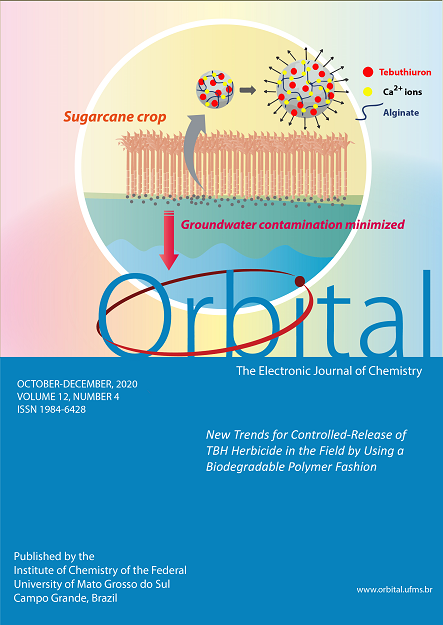Direct Determination of Malachite Green and Leucomalachite Green in Natural Waters by Exploiting Solid-phase Sorption and Digital Image
- adsorption,
- aquaculture,
- solid-phase spectrophotometry
Copyright (c) 2020 Orbital: The Electronic Journal of Chemistry

This work is licensed under a Creative Commons Attribution-NonCommercial-NoDerivatives 4.0 International License.
Abstract
Although malachite green (MG), a triphenylmethane dye, is banned for use in aquaculture in several countries, it is still widely employed to treat infections in fish and fish eggs. In living organisms, it is reduced to leucomalachite green (LMG) during physiological processes and can accumulate in adipose tissue. This work describes the development and verification of a simple and portable method, using preconcentration on an adsorbent surface and digital image analysis, for the determination of malachite green and leucomalachite green in natural waters. The optimum conditions of production and extraction in the film were evaluated univariate and the images were analyzed with the aid of Image J. The analytical curves were obtained from each color channel, using multiple linear regression (MLR) models for all parameters of the RGB system. Malachite green was adsorbed on a Florisil surface, followed by quantification using a calibration curve obtained with RGB image parameters, with the preconcentration factor was close to 10. Accuracy was assessed using recovery tests on river natural waters samples, showing no significant matrix effect or additive error. The technique is suitable for environmental monitoring purposes. Simple method, practical and versatile.

